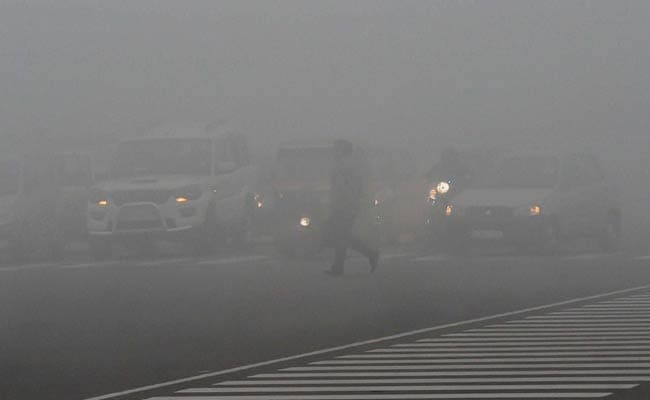
Ministry of Earth Sciences (MoES) will jointly conduct observational experiments in the national capital. (Representational Image)
New Delhi:
In order to better understand fog formation and dispersion, which can further lead to improved visibility predictions, different arms of the Ministry of Earth Sciences (MoES) will jointly conduct observational experiments in the national capital.
M Rajeevan, newly appointed secretary of the Ministry of Earth Sciences, said the project will greatly benefit in predicting fog conditions in the field of aviation, agriculture and railways in Delhi and the NCR.
For the purpose, the India Meteorological Department (IMD), Indian Institute of Tropical Meteorology (IITM) will conduct experiments for which several new apparatus have been set up at the Indira Gandhi International Airport (IGIA) and the Indian Council for Agriculture Research (ICAR), Pusa.
"We are currently giving fog predictions, but we need to understand the formation of fog. There are primarily two types of fog. One is radioactive and second is advection. Local conditions play a major role in formation of the radioactive fog while in case of advection, it occurs when moist air passes over a cool surface by advection (wind) and is cooled.
"So if we learn the formation of the fog pattern, we will be in a much better position to give improved prediction," IMD Director General Laxman Singh Rathore said.
Mr Rajeevan said the main objective of the proposed field campaign is to study the characteristics and variability of fog events over Delhi and associated dynamics and thermodynamics and cloud microphysics.
"However, the benefits of this observation will not be seen immediately, as it will take 2-3 winters (years) to study the patterns," Mr Rathore added.
The observations will include simultaneous measurements of surface meteorological conditions, radiation balance turbulence, thermo-dynamical structure of the surface layer, droplet and aerosols micro-physics, fog water chemistry, vertical profile of winds, which helps in understanding fog formation and dispersion.
M Rajeevan, newly appointed secretary of the Ministry of Earth Sciences, said the project will greatly benefit in predicting fog conditions in the field of aviation, agriculture and railways in Delhi and the NCR.
For the purpose, the India Meteorological Department (IMD), Indian Institute of Tropical Meteorology (IITM) will conduct experiments for which several new apparatus have been set up at the Indira Gandhi International Airport (IGIA) and the Indian Council for Agriculture Research (ICAR), Pusa.
"We are currently giving fog predictions, but we need to understand the formation of fog. There are primarily two types of fog. One is radioactive and second is advection. Local conditions play a major role in formation of the radioactive fog while in case of advection, it occurs when moist air passes over a cool surface by advection (wind) and is cooled.
"So if we learn the formation of the fog pattern, we will be in a much better position to give improved prediction," IMD Director General Laxman Singh Rathore said.
Mr Rajeevan said the main objective of the proposed field campaign is to study the characteristics and variability of fog events over Delhi and associated dynamics and thermodynamics and cloud microphysics.
"However, the benefits of this observation will not be seen immediately, as it will take 2-3 winters (years) to study the patterns," Mr Rathore added.
The observations will include simultaneous measurements of surface meteorological conditions, radiation balance turbulence, thermo-dynamical structure of the surface layer, droplet and aerosols micro-physics, fog water chemistry, vertical profile of winds, which helps in understanding fog formation and dispersion.
Track Latest News Live on NDTV.com and get news updates from India and around the world

